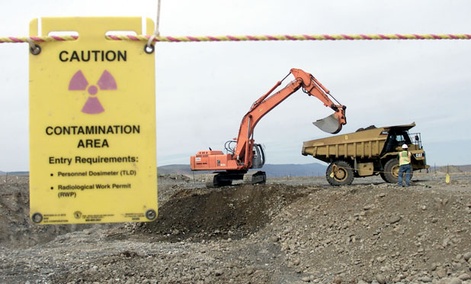Forbes
Jeff McMahon, Contributor

Gina
McCarthy, US President Barack Obama's nominee to run the Environmental
Protection Agency(EPA) oversaw the revision of the Protective Action
Guide Manual (Image credit: AFP/Getty Images via @daylife)
Although the document is a draft published for public comment, it takes effect as an “interim use” guideline. And according to Public Employees for Environmental Responsibility (PEER), that means agencies responding to radiation emergencies may permit many more civilian fatalities.
“In soil, the PAGs allow long-term public exposure to radiation in amounts as high as 2,000 millirems,” PEER advocacy director Kirsten Stade said in a press release. “This would, in effect, increase a longstanding 1 in 10,000 person cancer rate to a rate of 1 in 23 persons exposed over a 30-year period.”
The non-binding document does not relax EPA’s standards, the agency has said in response to the criticism. But it directs agencies responding to radiation releases to standards at other agencies that are less stringent than EPA. Douglas Guarino has the scoop at NextGov, a publication that follows technology and government:
The new version of the guide released Friday does not include such dramatically relaxed guidelines in its text, but directs the reader to similar recommendations made by other federal agencies and international organizations in various documents. It suggests that they might be worth considering in circumstances where complying with [EPA's] own enforceable drinking water regulations is deemed impractical….
For example, the new EPA guide refers to International Atomic Energy Agency guidelines that suggest intervention is not necessary until drinking water is contaminated with radioactive iodine 131 at a concentration of 81,000 picocuries per liter. This is 27,000 times less stringent than the EPA rule of 3 picocuries per liter.
Read More Here
.....
Nextgov
EPA Relaxes Public Health Guidelines For Radiological Attacks, Accidents
 Jackie Johnston/AP file photo
Jackie Johnston/AP file photo
The EPA document, called a protective action guide for radiological incidents, was quietly posted on a page on the agency’s website Friday evening. The low-profile release followed an uproar of concern from watchdog groups in recent weeks over news that the White House had privately agreed to back relaxed radiological cleanup standards in certain circumstances and had cleared the path for the new EPA guide.
Agency officials had tried to issue the protective action guide during the final days of the Bush administration in January 2009, but the incoming Obama camp ultimately blocked its publication in part due to concerns that it included guidelines suggesting people could drink water contaminated at levels thousands of times above what the agency would typically permit.
The new version of the guide released Friday does not include such dramatically relaxed guidelines its text, but directs the reader to similar recommendations made by other federal agencies and international organizations in various documents. It suggests that they might be worth considering in circumstances where complying with its own enforceable drinking water regulations is deemed impractical.
Such circumstances could include the months – and possibly years – following a “dirty bomb” attack, a nuclear weapons explosion or an accident at a nuclear power plant, according to the guide, a nonbinding document intended to prepare federal, state and local officials for responding to such events.
For example, the new EPA guide refers to International Atomic Energy Agency guidelines that suggest intervention is not necessary until drinking water is contaminated with radioactive iodine 131 at a concentration of 81,000 picocuries per liter. This is 27,000 times less stringent than the EPA rule of 3 picocuries per liter.
“This is public health policy only Dr. Strangelove could embrace,” Jeff Ruch, executive director for the watchdog group Public Employees for Environmental Responsibility, said in a statement Monday, referring to Peter Sellers’ character in the Stanley Kubrick film of the same name.
Read More Here
.....




No comments:
Post a Comment
Hello and thank you for visiting my blog. Please share your thoughts and leave a comment :)